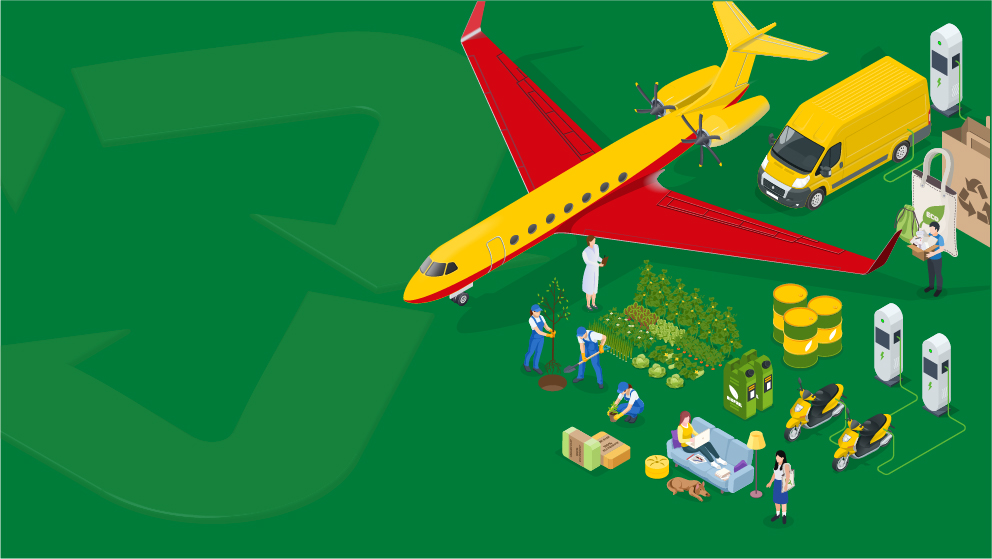Former DHL Express CEO Ken Allen was instrumental in ensuring the company's success following several key business mergers. Now he shares how he did it, the impact it had and what's next for him as he heads up a brand new division at DHL.
Back in 2002, Deutsche Post acquired DHL with the aim of becoming a global logistics player. While DHL has always been an international express business, Deutsche Post brought a new strategy that aimed to make the company a global 'one-stop shop' for logistics, requiring further expansion into domestic markets. For the US market, this involved acquiring Airborne Express, which was the country’s third-largest player in domestic package delivery at that time. However most of the Airborne Express management team left shortly after, taking their skills and knowledge with them.
This is where Ken Allen stepped in, transforming the company’s staff, strategy and, ultimately, bottom line. Serving as CEO of DHL Express from 2008 to 2018, he played a crucial role in the company’s turnaround. He’s now gone on to head up DHL’s new eCommerce Solutions division, which has been created so the company is better positioned to thrive on e-commerce opportunities across Europe and around the world. Here he shares some of the solutions and tactics he employed to make that important turnaround happen, and what’s next for him at DHL.
What main challenge did you face with the DHL and Deutsche Post merge?
The basic problem was that we had lost focus. Domestic shipping involves high volumes with thin margins – a challenging environment for any company. Behind the domestic expansion was the belief that high volumes in domestic shipping would reduce our unit costs for international as well. This meant there was continued pressure to make domestic work, even as the losses began to grow. By 2007, 70% of our shipping volume was domestic, which was like having a loss leader as the majority of our business. It was clear that we had stretched ourselves too thin with the expansion in domestic markets. A sense of resignation had set in within the management team and the general workforce.
How did you approach the problem?
For executives, the question of 'what to do' is often better thought of as 'what not to do'. I knew the gaping wound in DHL’s profit and loss account needed more than a Band-Aid. We had to retreat from unprofitable activities and shift into areas where we could better differentiate our company. International express delivery offers higher revenue per shipment and requires a more customized skill and level of service. But dropping domestic shipping would be a major strategic shift. I had to convince other members of senior management that our new direction was worth the enormous price tag of market withdrawals and restructuring. Our turnaround strategy was based on one central tenet: focus. DHL Express would have the single focus of being the world’s premier international express shipping company.
How did this new approach affect your customers?
We had to attract new customers with our international express service, while not losing the accounts we had. We worked with other countries in our network to identify US exporters that were trading with customers in those countries, as well as US companies sourcing from those markets. Many of these customers were shipping 90% of their volumes domestically. Convincing them of the value of sending their international shipments through a different provider was a huge challenge.
How did that affect your global workforce?
Our employees were about to experience a huge cultural and operational adjustment. People who had spent their careers shipping between US states would be learning an international service that involved paperwork and duties for customs clearance, compliance with sanctions and more complex routing.
In addition – and this was the most difficult decision by far – we had to part ways with 10,000 of our own people. With our complete withdrawal from US domestic shipping in 2008, a number of roles became redundant. It was incredibly hard, but we knew the company’s survival – and the jobs of employees both in the US and around the world – had to come first.
How did you engage your employees with the changes that were taking place?
Our employees define the customer experience, so our focus strategy positioned our people as the key part of a four-link chain of success: Motivated employees would provide great service, leading to loyal customers and, ultimately, a profitable network. We organized a series of intranet videos and countless town hall meetings worldwide to share the new strategy. PowerPoint slides and flowcharts aren’t great at inspiring people, so I chose a type of communication that goes straight to the heart: music.
Each link in the chain of success was coupled with a song, and we didn’t just play the songs in the background at these meetings – we sang them. Management belted out Dionne Warwick’s 'What the World Needs Now Is Love' to emphasize the loyalty we wanted to inspire in our customers, and the Ashford & Simpson classic 'Ain’t No Mountain High Enough' for the levels of motivation we needed from our people.
I still remember the shock – some might say horror – on our managers’ faces when, at a conference in 2010, I introduced our first landmark profit target by treating them to a solo rendition of the chorus from Travie McCoy’s 'Billionaire'.
What role did the Certified International Specialist (CIS) program play in the company turnaround?
Through in-house workshops, the CIS foundation course introduces every employee at DHL Express to the fundamentals of international shipping and company strategy – in just two days. Additional modules offer deeper dives into specialized topics like customs clearance. This incredibly successful program is about more than just training, and it is undoubtedly the achievement I am most proud of in my career to date. Since its inception, employee engagement and profitability have increased in perfect tandem.
Why does CIS work for DHL? What could other companies learn when designing their own programs?
Most engagement programs fail because of a lack of ownership at the top; early on we decided that if CIS was going to fail, that wouldn’t be the reason. The other directors and I used time at our board meetings to review the content and design, and we came to walkthroughs of the activities. Most importantly, the board members and I went through the program ourselves. This gave us first-hand insights into what was and wasn’t working.
Like new hires in customer service, we learned about our company’s history, enjoyed spirited discussions with colleagues about the direction in which it was headed and got excited about its future.








